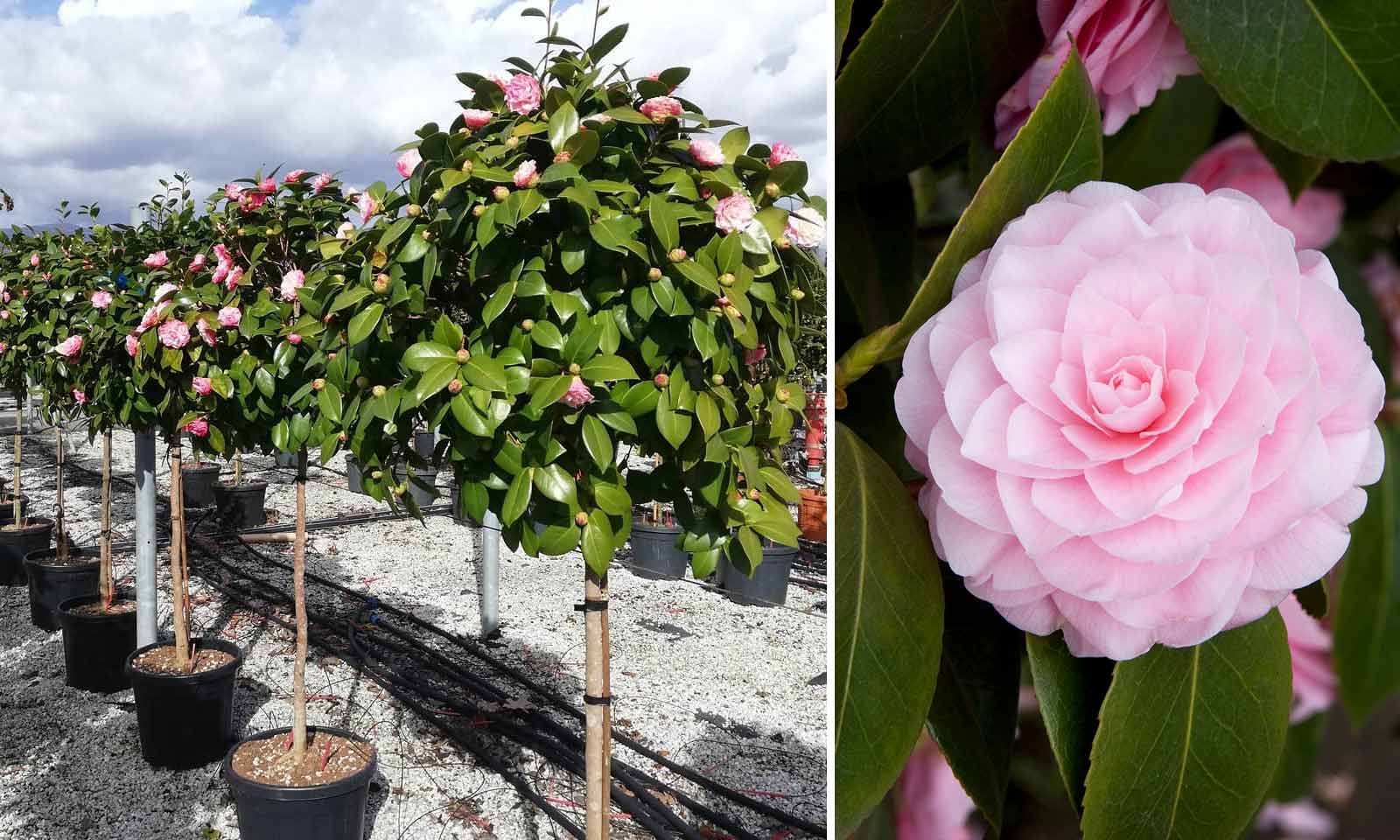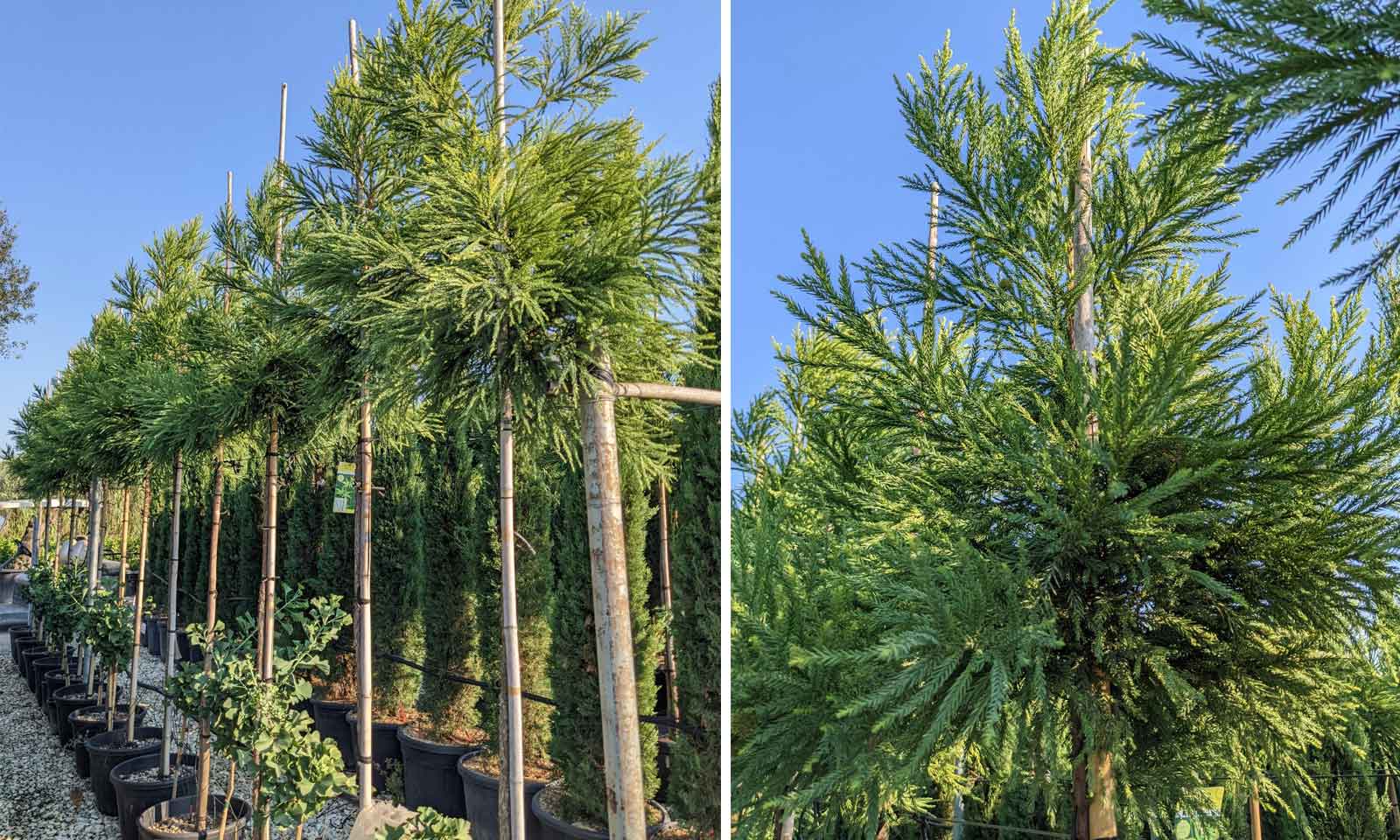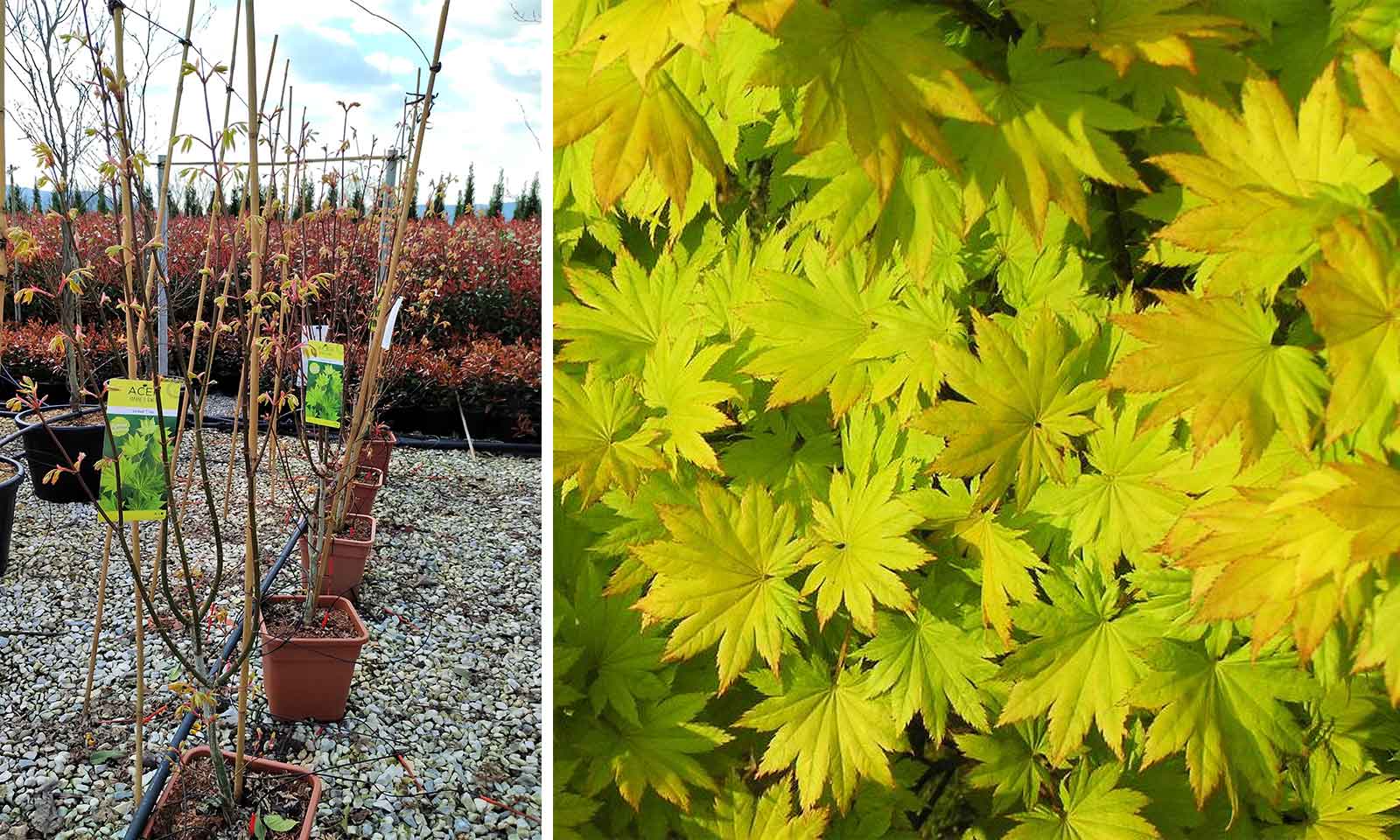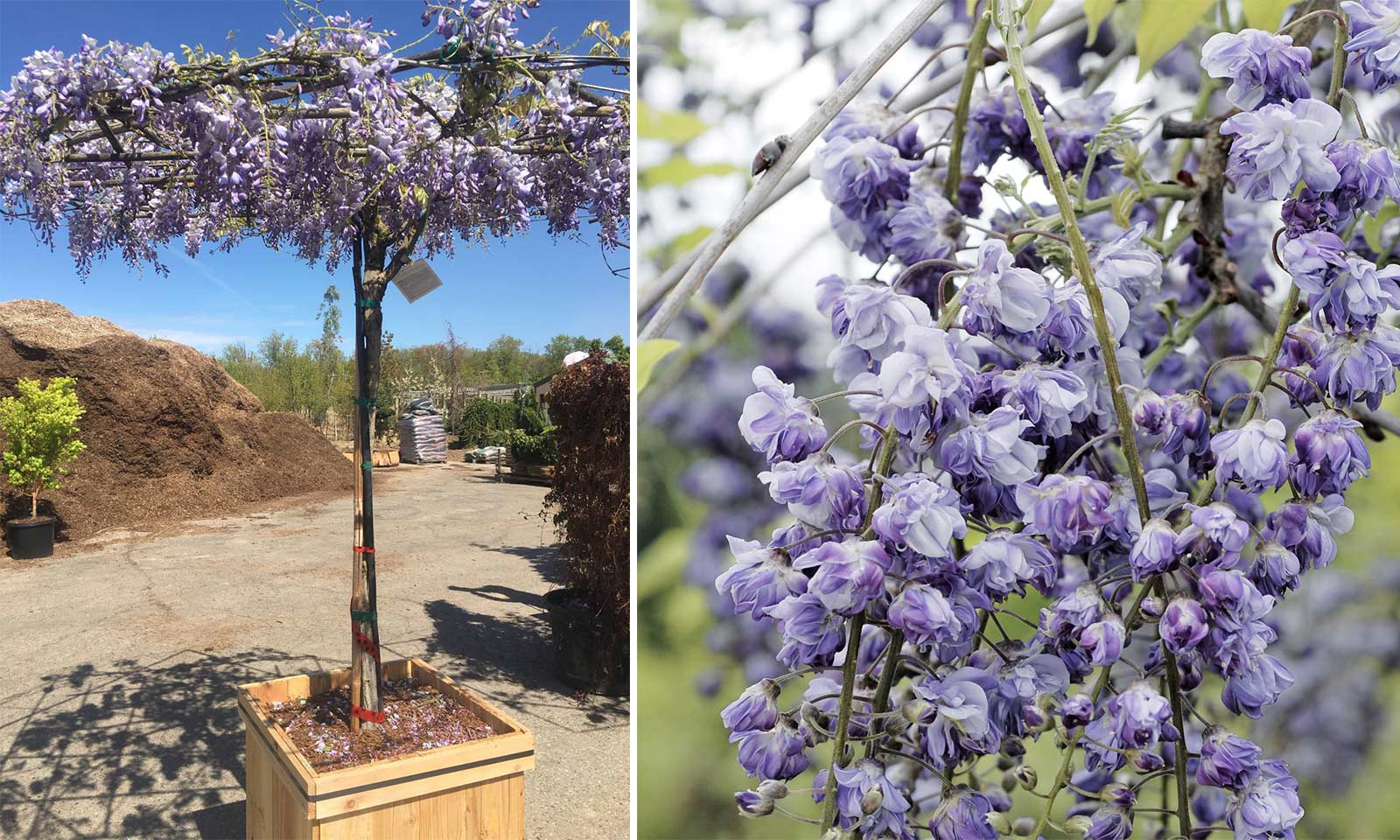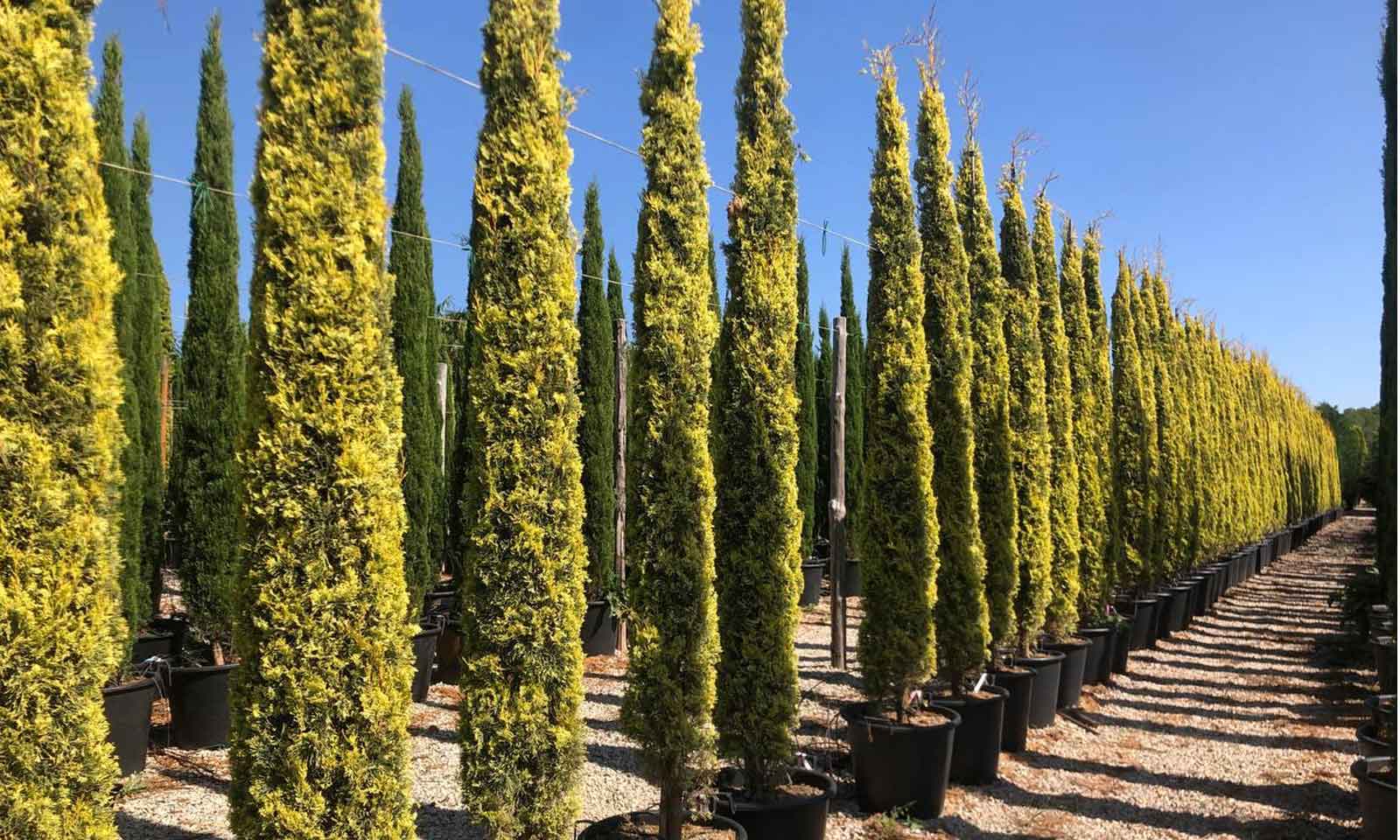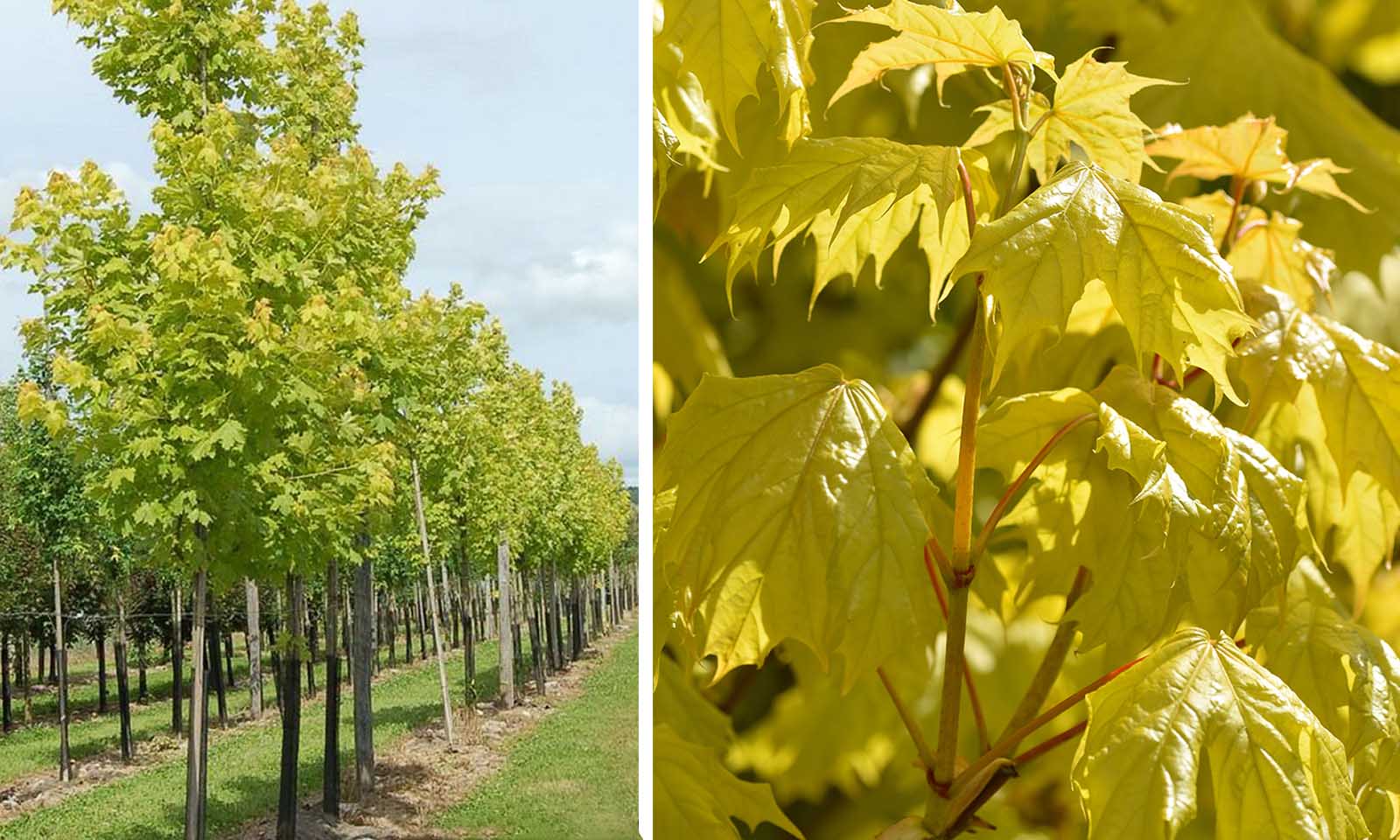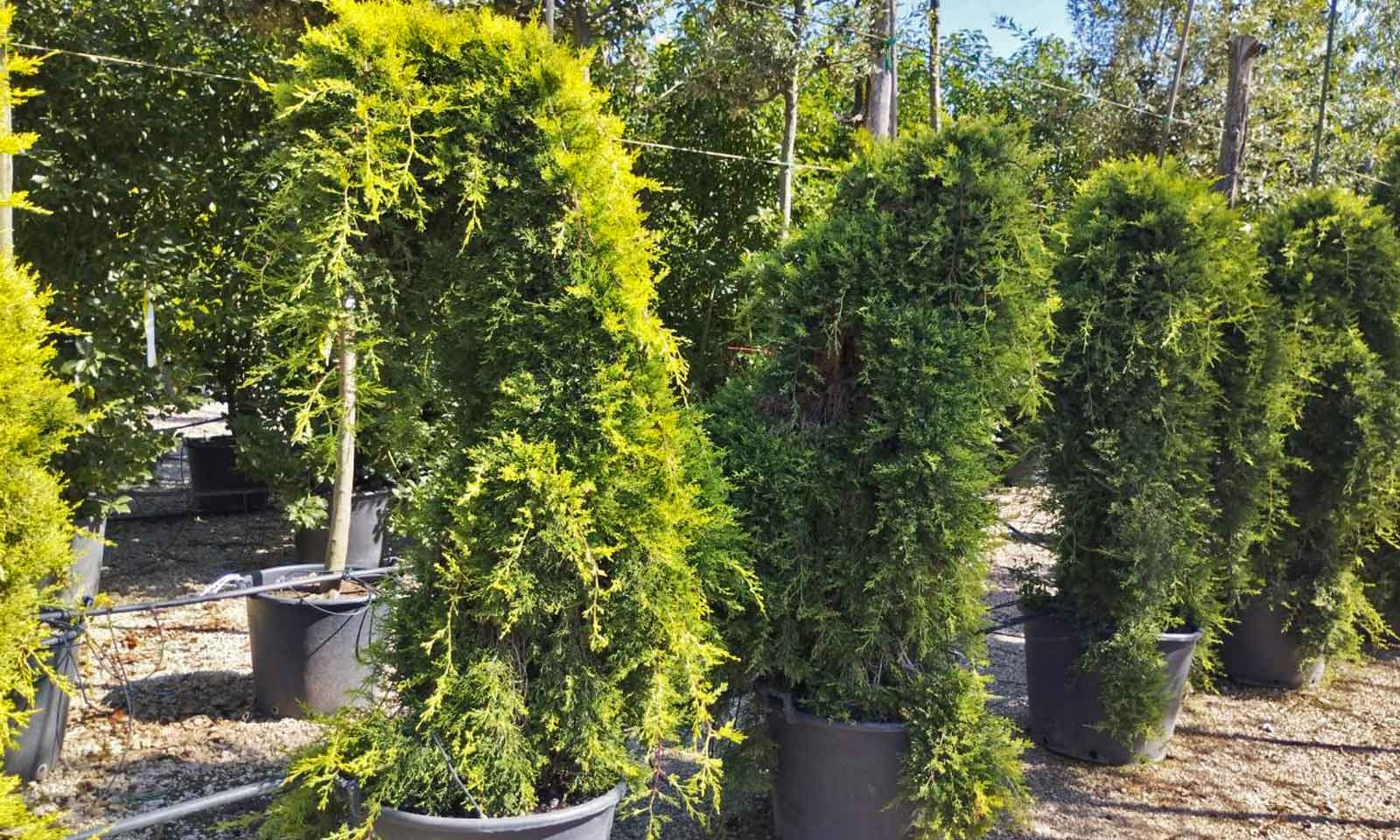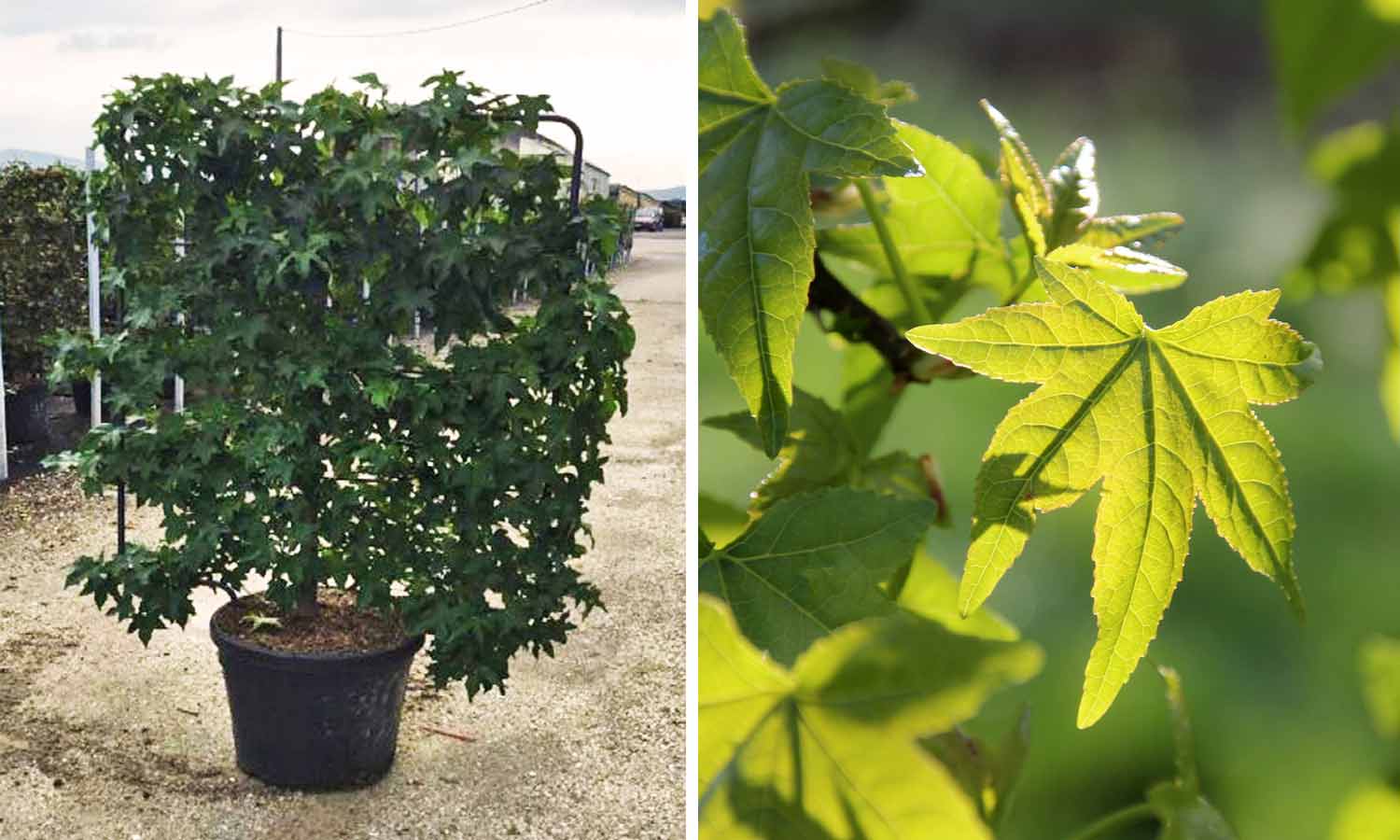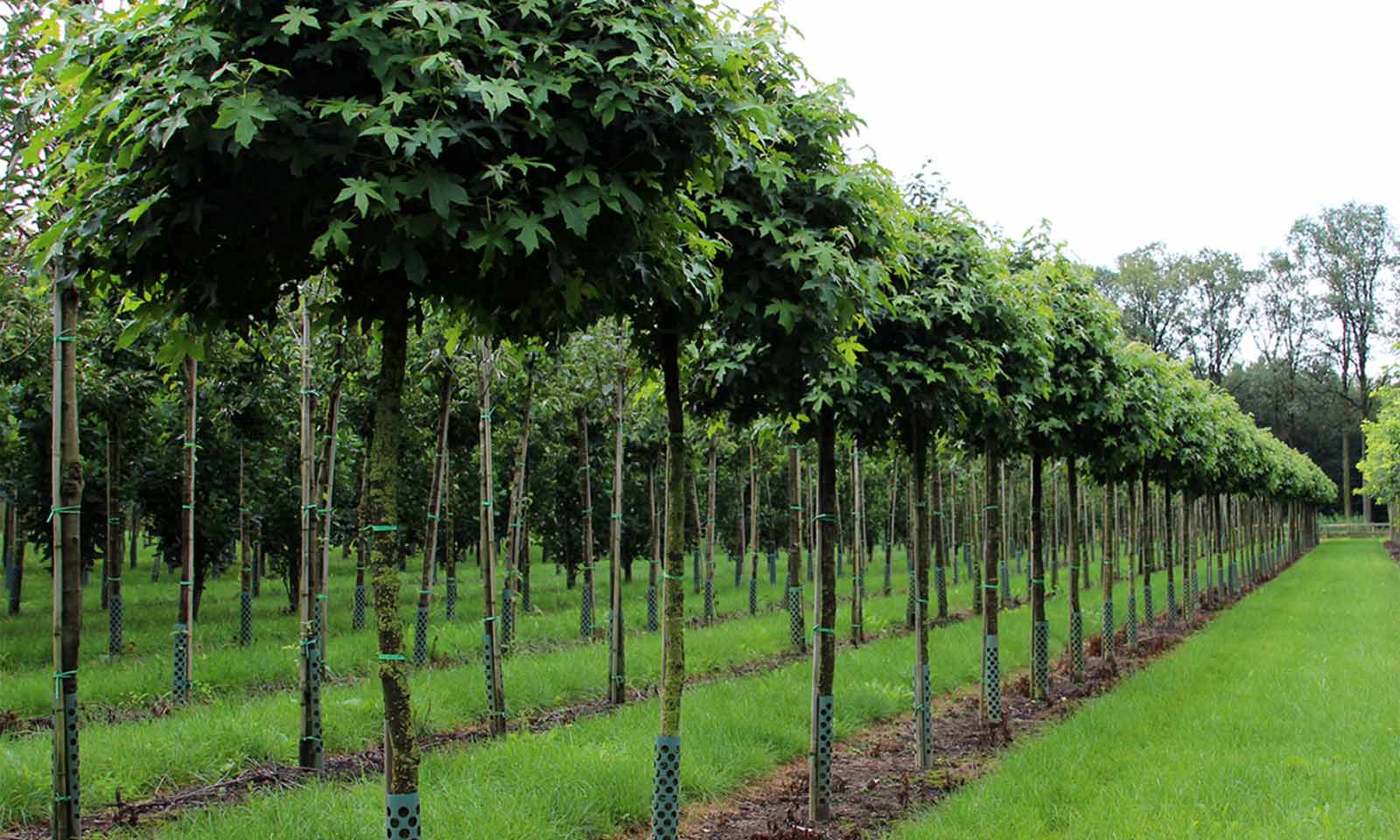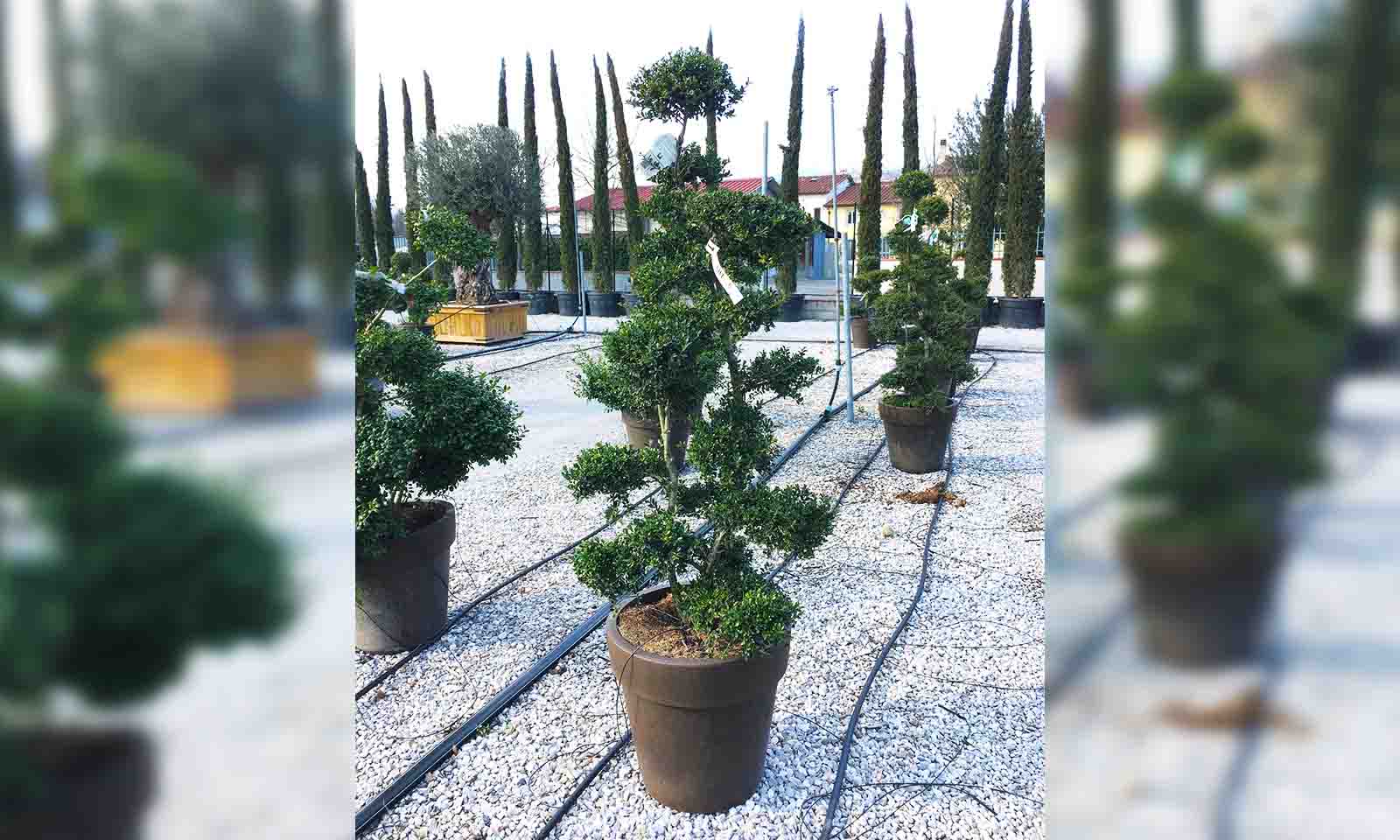Liquidambar Styraciflua (Sweet Gum Tree) - Espalier
One of the most elegant deciduous trees with a straight trunk covered in well-spaced branches forming a regular shaped pyramid which with age becomes rounded. It can easily be trained into a tree with a clear stem topped with a own that is initially pyramidal and then globular. The bark, green in the first year and then grey cracks and becomes corky with ribs that gradually get deeper. Leaves: borne on long stalks which look like the maple leaf, with 5 acuminate lobes, slightly toothed, bright green from spring until autumn when they turn the most beautiful colours, from golden yellow, orange, bright red to purple. Flowers: form at the same time as the leaves, not very showy, neither the male ones (yellowish, round, grouped in racemes), nor the female ones which are grouped in short inflorescences. Fruit: hanging, round, initially green and then brown when ripe, resembles fruit of plane trees but smaller. Loves deep, moist, but not marshy, soil. Adapts to other types of soil provided not too dry and very calcareous. Use: planted singly or in groups of three, or together with other trees with colourful foliage as a street plant. It can also be planted in small gardens, as its growth can be contained by pruning which it withstands extremely well.
Latin Name: Liquidambar Styraciflua
English Name: Sweet Gum Tree, Silver King
Species: Hamamelidaceae
Genus: Liquidambar
Foliage Type: Deciduous
Foliage: Green-White-Pink-Purple-Variegated-Grey
Fragrance: Flower
Flowering Period: Throughout the year
Suggested Location: Outdoor.
Suggested Soil Type: Well-Drained, moist but well drained. Clay. Loam. Sand,
Suggested Exposure to Sunlight: Full Sunlight or Partial Shade.
Suggested Exposure to Weather: Sheltered or Exposed
Hardiness Rating: High (H6)
Lowest Temperature Tolerance: -20 °C to -15 °C (-4 °F to 5 °F)
Cultivation: Grow in lime-free soil in sun or partial shade
Suggested planting locations and garden types: Low Maintenance Cottage; Informal Garden
Maintenance: Pruning group 1
Propagation: Propagate by semi-hardwood cuttings, or by grafting in winter
Habit: Bushy
Pests: Generally trouble free
Diseases: Generally trouble free
Delivery Cost: This is calculated based on the total size, weight and quantity of your order, as well as the location of your delivery address. You will see the final price at the Online Checkout Page (before making payment) – our website will automatically calculate the lowest possible delivery price and apply discounts to orders of certain products – giving you the best value delivery every time!
Please note that high-volume orders will decrease your delivery costs significantly by spreading the price across multiple items. Visit our Delivery Policy page for more information.
